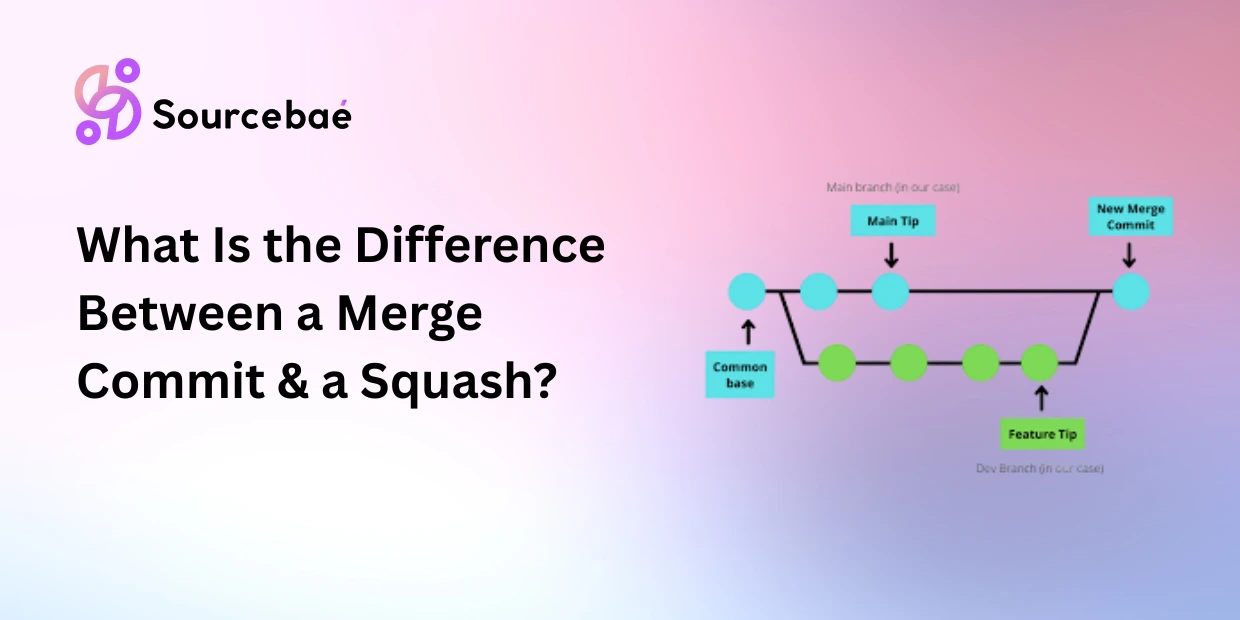In the fast-paced realm of software development, version control is the linchpin that holds everything together. Whether you’re a seasoned developer or just stepping into the coding arena, you’ve likely encountered the terms “merge commit” and “squash.” These concepts are central to collaboration, maintaining code quality, and fostering a seamless development process. In this comprehensive guide, we’ll delve into the nuances that set merge commits and squashes apart. By the end, you’ll be equipped with a clear understanding of when to use each technique and how they impact your codebase.
Merge Commit: Bridging the Codebase
At its core, a merge commit is a testament to teamwork. It’s the embodiment of collaboration among developers working on separate branches. Imagine you’re working on a project with multiple developers, each contributing their code to individual branches. When it’s time to integrate these diverse streams of work into the main branch, a merge commit is the bridge that connects them.
What is a Merge Commit?
A merge commit is a point in the code’s timeline where changes from one branch are incorporated into another. It unifies separate lines of development and allows the team to combine their efforts into a cohesive whole. It’s like taking pieces of a jigsaw puzzle and fitting them into place to complete the bigger picture.
When to Opt for a Merge Commit?
Merge commits are ideal in scenarios where maintaining a clear and detailed history of changes is crucial. This approach preserves each developer’s contribution in its entirety, ensuring that the commit history remains a transparent record of who did what and when. It’s a powerful choice when accountability and traceability are paramount.
LSI Keywords: integrating changes, version control history, collaborative development
Squash: Forging a Unified Narrative
On the flip side, the concept of squash brings an element of conciseness and tidiness to version control. While merge commits celebrate individual contributions, squashing epitomizes the elegance of a succinct and unified story within your codebase.
What is a Squash?
Imagine your branch resembles a storyboard, with each commit as a frame. When you squash commits, you’re essentially condensing these frames into a single, coherent picture. All the changes, iterations, and fine-tuning are encapsulated into one commit. It’s like summarizing a novel into a compelling blurb without losing the essence of the story.
When to Opt for Squashing?
Squashing is a game-changer when you want to maintain a clean and streamlined commit history. This technique is particularly useful when preparing your code for review, testing, or integration into the main branch. By squashing related commits, you present a holistic view of your changes, making it easier for reviewers to grasp the narrative without delving into intricate details.
Comparing Merge Commits and Squashes
Now that we’ve explored the individual facets of merge commits and squashes, let’s put them side by side to highlight their distinctions.
| Aspect | Merge Commits | Squashes |
|---|---|---|
| Commit History | Detailed, showing individual contributions. | Condensed, presenting a unified narrative. |
| Transparency | Transparent, highlighting separate changes. | Streamlined, focusing on the bigger picture. |
| Review and Testing | Comprehensive, showing incremental progress. | Simplified, making reviews more comprehensible. |
| Traceability | Clear record of who did what and when. | Coalesced changes, tracking is more generalized. |
| Integration Efficiency | Ideal for preserving a complete history. | Enhances clarity when integrating into main. |
FAQs
What are the Benefits of Using Merge Commits?
Merge commits provide a detailed overview of individual contributions, making it easier to trace back changes and pinpoint the origins of specific features or fixes.
Can Squash Lead to Loss of Information?
Squashing combines commits into one, potentially hiding intricate development details. However, the commit messages and summaries should encapsulate the essence of the changes.
Do Merge Commits Impact Code Performance?
Merge commits themselves don’t directly influence code performance. Any performance issues are more likely related to the quality of code being merged.
Is Squashing Always Preferred for Code Review?
Squashing is advantageous for code review when you want to present a concise story. However, it might not be suitable for all projects, especially when granular changes need scrutiny.
Can You Combine Merge Commits and Squashes?
Certainly! In some workflows, developers might use a combination of merge commits and squashes based on the nature of changes and the desired commit history.
Does Git Support Both Merge Commits and Squashes?
Yes, Git supports both approaches, allowing developers to choose the method that best aligns with their project’s requirements and collaboration style.
Conclusion: Navigating Your Version Control Voyage
In the dynamic realm of software development, understanding the subtleties between merge commits and squashes is akin to mastering different strokes in painting. Each technique adds a unique hue to your version control canvas. Merge commits preserve the intricate details of collaboration, while squashes create a polished masterpiece of succinctness.
As you embark on your coding journey, armed with this knowledge, you’ll confidently choose between merge commits and squashes, tailoring your approach to the demands of your project. Remember, the key lies in adapting these techniques to suit your team’s dynamics, development strategy, and the story you wish to tell through your codebase. So, whether you’re merging with a flourish or squashing with finesse, version control will be your ally in creating software that’s truly a work of art.
SOURCEBAE: HIRE REACT DEVELOPER






